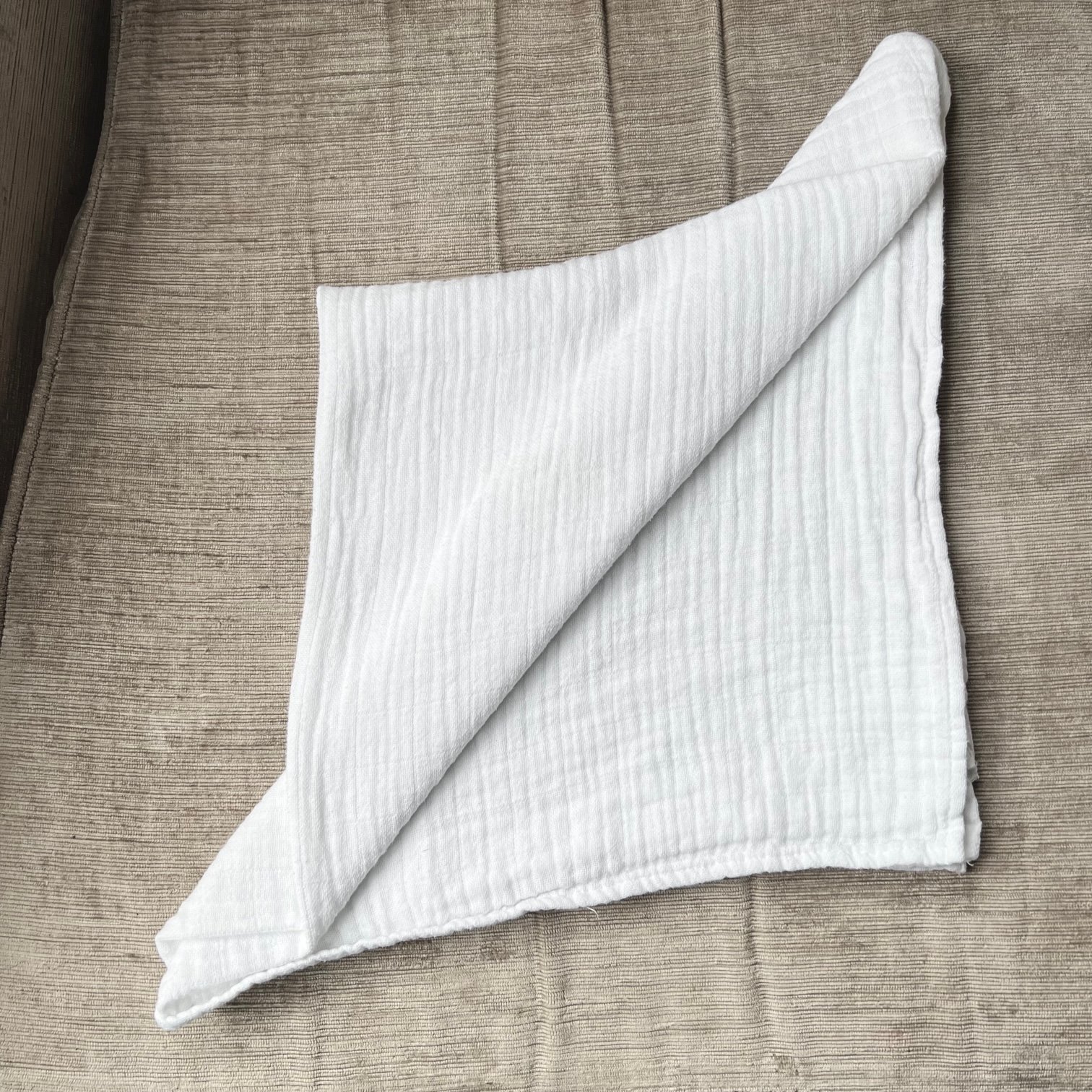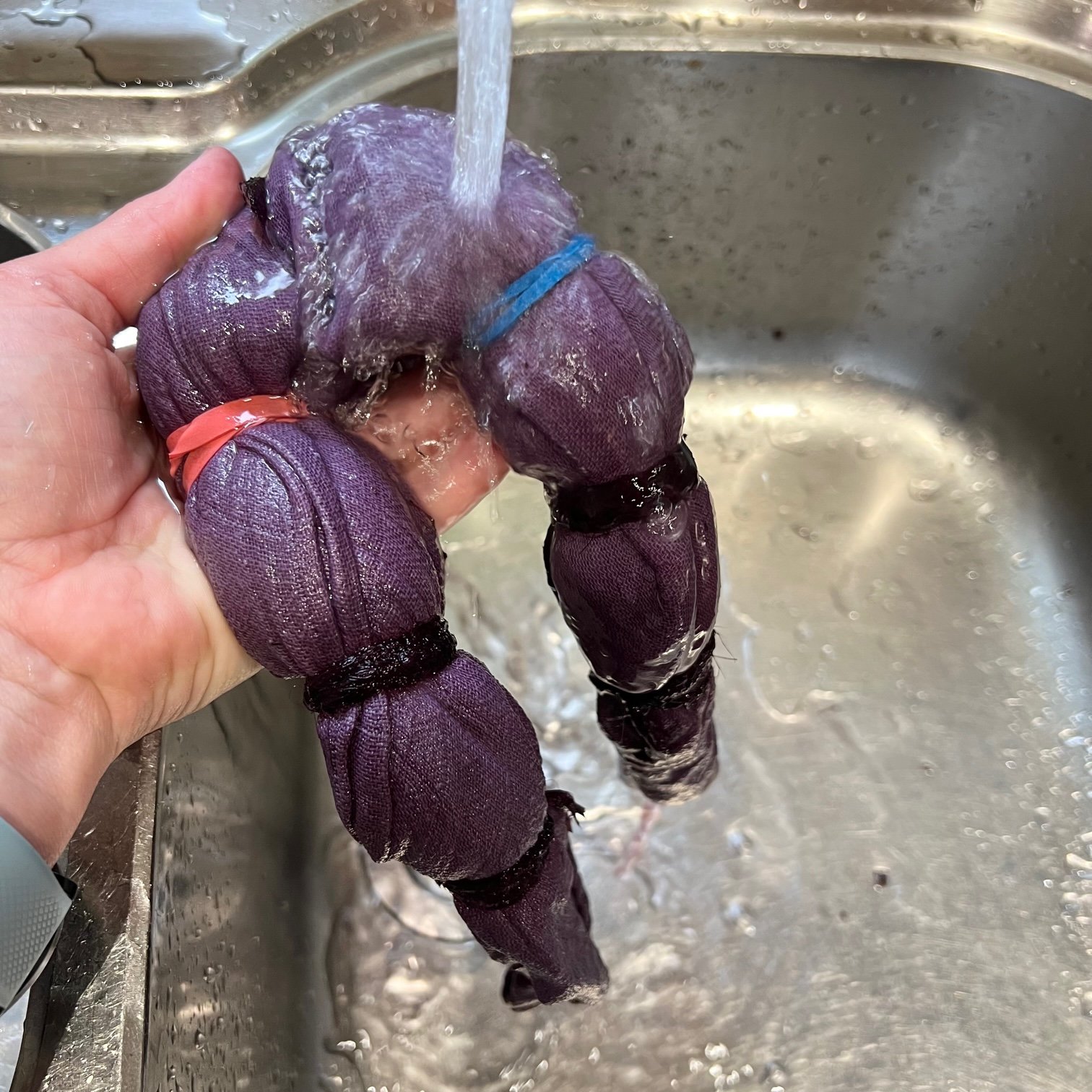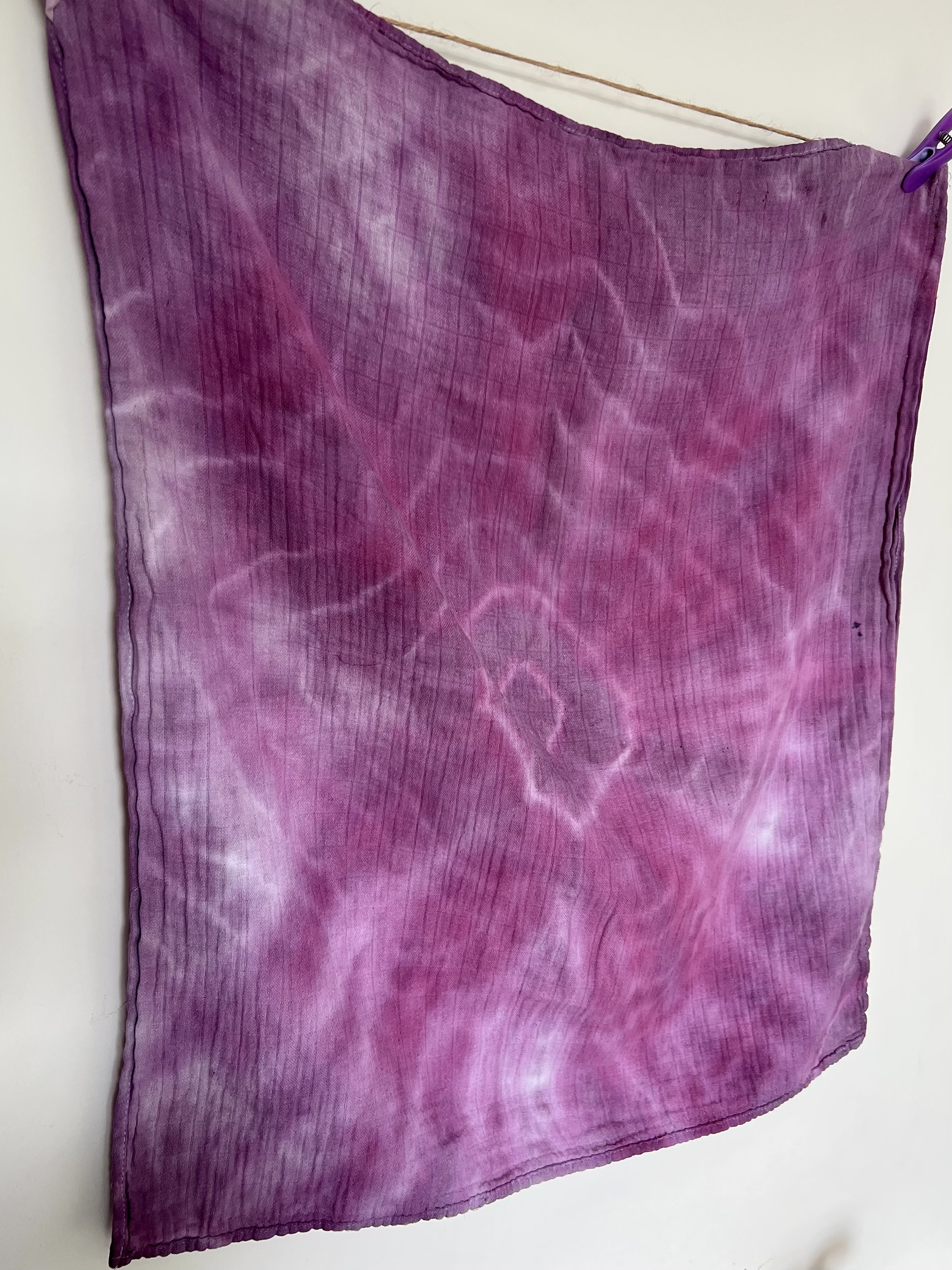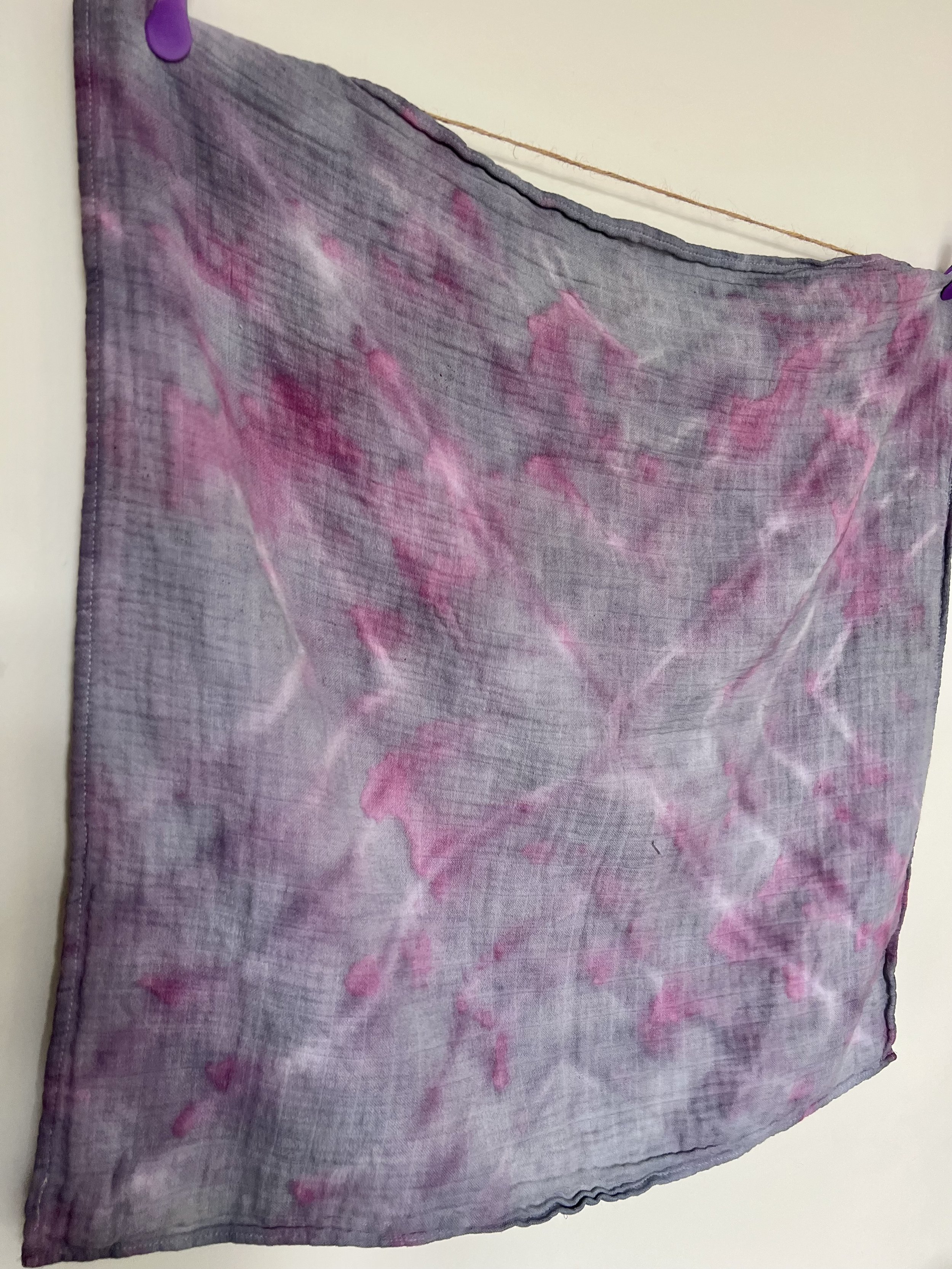Tie dye with natural berry dye
There are so many berries at this time of year in beautiful hues of red, purple and blue and these colourful berries can be turned into fabric dye. Depending on how many berries you use, the berry dye can transform white fabric to a light pink, lavender or deep purple shade. As berries are pH sensitive, you can also adjust the colours and make multiple shades using acids like vinegar or lemon juice or an alkali such as bicarbonate of soda.
For this activity, I’ve used elderberries and blackberries and created patterns using the tie dye method. This is my first attempt at both dying fabric and tie dye but I’m really pleased with how it tuned out!
What you will need:
2 cups of elderberries or blackberries
Cotton fabric (I used cotton muslins)
Elastic bands or twine
2 tbsp of salt
White vinegar or lemon juice (optional)
A large pan
A stirring spoon or stick
A potato masher or fork
A marble (optional)
Note: Don’t work with anything you don’t want stained such as pans, spoons or your clothes! Cover any surfaces that you will be working on.
What you need to do:
First you will need to go for a walk and collect some berries! You will need about two cups full. This is a great activity to use any berries that look past their best for cooking with. Elderberries are toxic when raw so if you’re worried about your child eating them, then you could use blackberries instead.
Place your berries in a pan with approximately 3 times the amount of water (so 6 cups of water for 2 cups of berries). More water will create a lighter dye. The easiest way to remove the elderberries from the stalks is to freeze them and then run a fork along the stalks, although it doesn’t matter if some of the stalks are included.
Add a couple of tablespoons of salt to the pan. Salt encourages the dye to penetrate the material and bind to the fibres of your fabric.
Place the lid on your pan and heat until the water simmers. I simmered my berries for about 15 minutes until they were soft.
While your berries are simmering, take your fabric and tie some of your elastic bands or twine around your fabric. You can tie bunches of fabric randomly, scrunch up the whole of the fabric and tie around it all, or you can choose one of the methods below. The parts of the fabric underneath the elastic bands or twine will not be dyed (or, at least, not to the same intensity!) which will make an interesting pattern.
Accordion folding
For this method, I folded a square of muslin in half and then in half again to make a square. I then folded this diagonally.
Where you have just folded, fold back again but not all the way, so there is a strip of folded fabric along the centre. Alternate folding back and forth until you reach the last of the fabric.
Carefully turn the fabric over and do the same on the other side.
Tie your elastic bands or twine around the strip of folded fabric at each of the ‘points’. Make sure you tie really tight!
Bullseye folding
Lay your fabric flat and place a marble at the centre of the fabric and tie around it.
Pull upward from the marble and let the rest of the fabric hang down into a skinny cone shape. Tie your elastic bands or twine at intervals until you have reached the bottom of your fabric.
(In my photo here, I actually just spiralled twine around the muslin until I reached the end…I wouldn’t recommend this as it was really hard to make the twine tight!)
Now back to the berries! Remove the pan of from the heat and then gently mash the berries with a potato masher or fork to release the colour.
Lower your tied fabric into the berry liquid, using a wooden spoon or stick to make sure the fabric is completely covered with dye.
Fabric in elderberry dye.
Leave the fabric to soak in the liquid for an hour or so and stir every so often. Keep an eye on the shade and don't leave it in too long as the dye will begin to oxidise and turn brown.
Remove the fabric and squeeze as much of the berry liquid out as you can then rinse until the water runs clear. You can see in my photos below how the tap water affected the colour of the elderberry-dyed fabric! The berries are naturally acidic but they are also pH sensitive which means their dyes will change colour depending on whether they come into contact with acids or alkalis. Here in Bristol, the water is pretty hard and so is slightly alkaline, so rinsing with tap water shifted the colour of my fabric to a blue-purple hue. To prevent this and to keep the pink-purple hue, you could rinse your fabric in a bowl of water and vinegar or lemon juice which is acidic.
Now you can remove the elastic bands or twine to reveal the pattern underneath!
I think where the elastic and twine were tied on my fabric, it was protected from the alkalinity of the tap water which is why the areas around these lines are more pinky-purple. I love the variation! I’m pretty pleased with the results and would love to experiment more, both with different natural dyes and also adjusting the dye colours with acids or alkalis.
Make sure you wash the fabric alone for the first couple of washes. The berry liquid is actually considered a stain rather than a dye and so the colour will fade over time and more so if it is washed frequently.
Author: Denise Hope, home educating mum of two boys


















